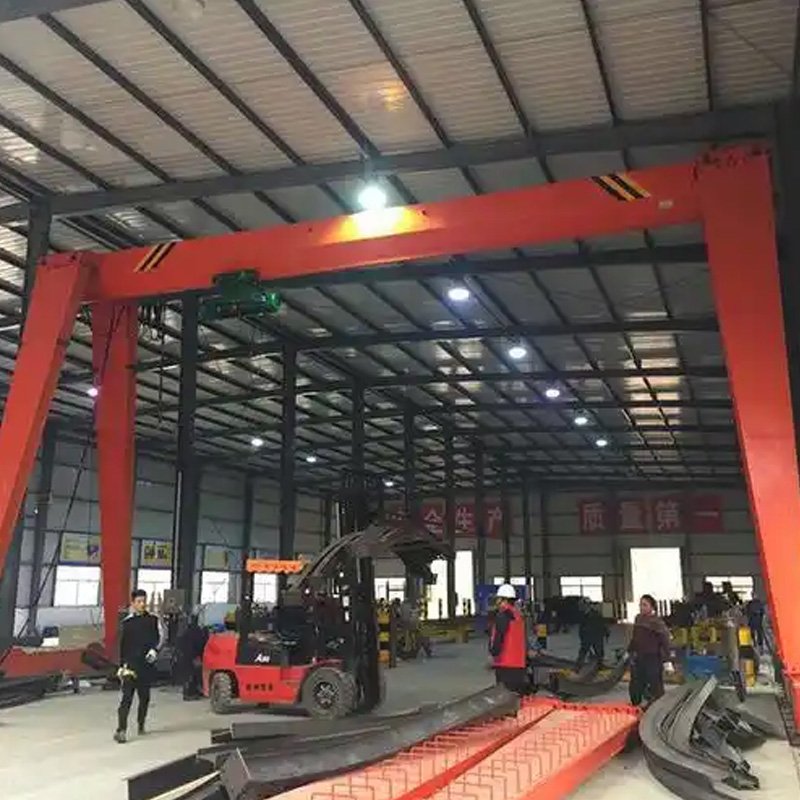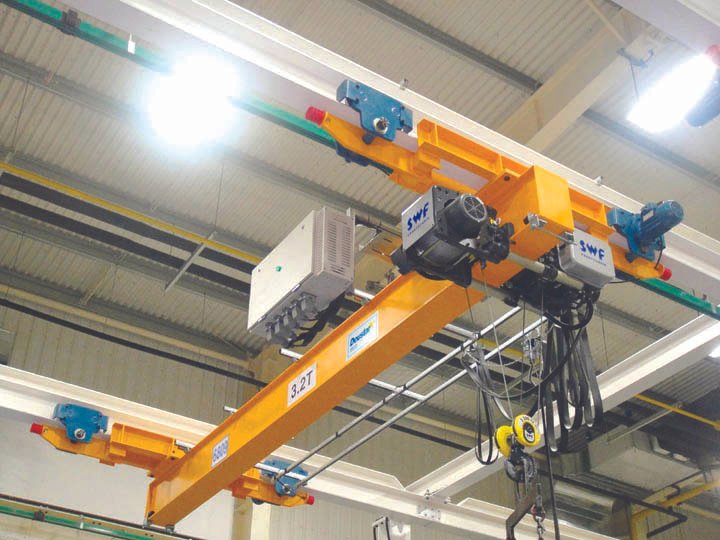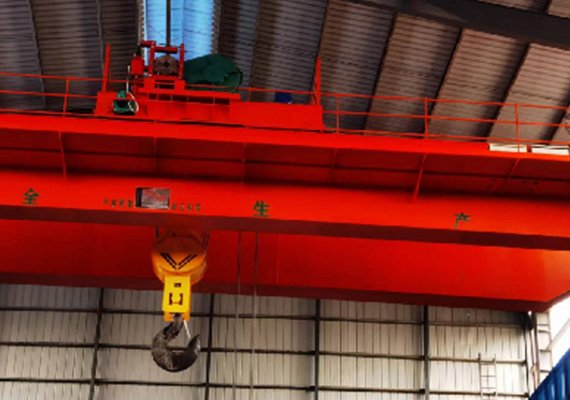When choosing the right lifting solution for your business, understanding the key differences between overhead crane and gantry crane is crucial. Both serve the same purpose—lifting heavy loads—but their design, functionality, and ideal use cases vary significantly.
In this article, we’ll explore the design and technological differences between overhead and gantry cranes, helping you determine which one best suits your operational needs.
What is an Overhead Crane?
An overhead crane, also known as a bridge crane, typically installs in a fixed position on the ceiling of a building. It consists of a horizontal bridge that moves along fixed tracks on both sides of a workspace, carrying a hoist that can lift and move heavy loads.
Design Features:
- The crane mounts to the building’s structure, and a bridge runs on rails, allowing for maximum use of space.
- The hoist, suspended from the bridge, moves horizontally and vertically, providing flexibility in lifting materials.
- Overhead cranes often work in factories, warehouses, and manufacturing plants with high ceilings, where space optimization is critical.
Key Applications:
- Ideal for indoor environments with high ceilings and limited floor space.
- Commonly used for handling materials like metal, machinery, and heavy equipment.
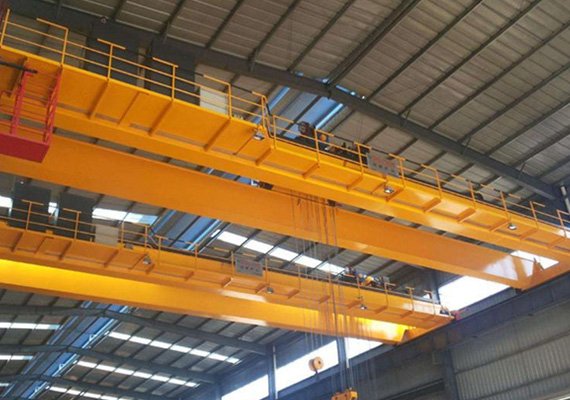
What is a Gantry Crane?
A gantry crane is similar to an overhead crane but with one major difference: it is supported by legs or pillars, allowing it to move across open spaces without needing to be fixed to a building. Gantry cranes are designed to operate in outdoor environments or large open areas where they can traverse across wide surfaces.
Design Features:
- The crane mounts on a robust frame, supported by legs that run on rails at ground level.
- This type of crane can move freely across a large area, often offering more flexibility in terms of coverage.
- Gantry cranes typically serve in outdoor applications, where no ceiling structure supports an overhead crane.
Key Applications:
- Ideal for outdoor construction sites, ports, and large-scale industries like shipbuilding, where workers need to lift heavy objects over large distances.
- Commonly used for container loading/unloading in ports or construction equipment handling.
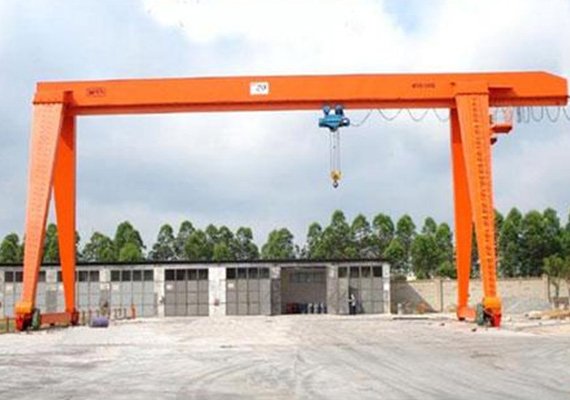
Key Design Differences: Overhead Cranes vs. Gantry Cranes
The primary differences between overhead cranes and gantry cranes lie in their structural design and mobility.
Structural Differences:
- Overhead Cranes: Mounted on rails fixed to a building’s ceiling or walls. This design requires high ceilings and a solid overhead structure to support the crane’s weight.
- Gantry Cranes: Supported by a freestanding frame, often with legs that rest on the ground. This lets the crane operate in areas without an overhead structure, offering more mobility.
Space Utilization:
- Overhead Cranes: Save valuable floor space because they don’t require a large base area. Their movement stays within the bridge on the ceiling, making them ideal for narrow or constrained spaces.
- Gantry Cranes: Require more ground space as they are not fixed to a building. However, they offer the ability to move across a wide area, which is useful for outdoor and expansive operations.
Mobility and Flexibility:
- Overhead Cranes: Movement stays limited to the rails on which they install. They cannot move across the entire site but are ideal for confined spaces like warehouses.
- Gantry Cranes: Offer more mobility and can move across vast distances, making them a good option for large open areas and outdoor sites.
Technological Differences: Overhead Crane vs. Gantry Crane
Technological advancements in overhead cranes and gantry cranes help enhance their performance, safety, and efficiency.
Overhead Cranes:
- Control Systems: Modern overhead cranes often feature variable frequency drives (VFD), which allow for smoother operation, greater energy efficiency, and more precise load handling.
- Safety Features: Overhead cranes often come with programmable lifting limits, load limiters, and safety brakes to prevent overloading and ensure operator safety.
- Automation: Many overhead cranes can be automated for precision operations, reducing the need for manual intervention and increasing operational efficiency.
Gantry Cranes:
- Portability: Gantry cranes are designed to be portable, and many are equipped with wheels, allowing them to be moved easily across different locations.
- Heavy Lifting: These cranes are designed to handle heavier loads over longer distances, especially useful for industries like shipping and construction.
- Safety Features: Gantry cranes often feature high-visibility lighting, motion sensors, and remote control systems for safer operation in busy, outdoor environments.

Choosing Between Overhead Crane and Gantry Crane
When deciding between an overhead crane and a gantry crane, consider factors such as the work environment, load capacity, and available space.
Overhead Crane:
- Best suited for indoor applications with limited space and high ceilings.
- Ideal for applications requiring precise load positioning, such as factories or assembly lines.
Gantry Crane:
- Best for outdoor or expansive areas that need flexibility and mobility.
- Suitable for applications that require large-scale lifting, such as in construction or port facilities.
Related article: Top Uses of a Heavy Duty Engine Crane in Automotive and Industrial Repair
Conclusion: Which Crane is Right for You?
Both overhead cranes and gantry cranes have their unique advantages and applications. If you operate in a confined indoor space with high ceilings, an overhead crane may be the best choice. If you need a crane that can handle large, outdoor loads or move across expansive areas, a gantry crane might suit your needs better.
Contact Yonghao Crane Co., Ltd. today to learn more about how our overhead and gantry cranes can help meet your specific lifting needs. Our expert team can provide a tailored solution based on your operational requirements.
Contact us today to discuss your next project:
yonghaoqizhong@163.com

